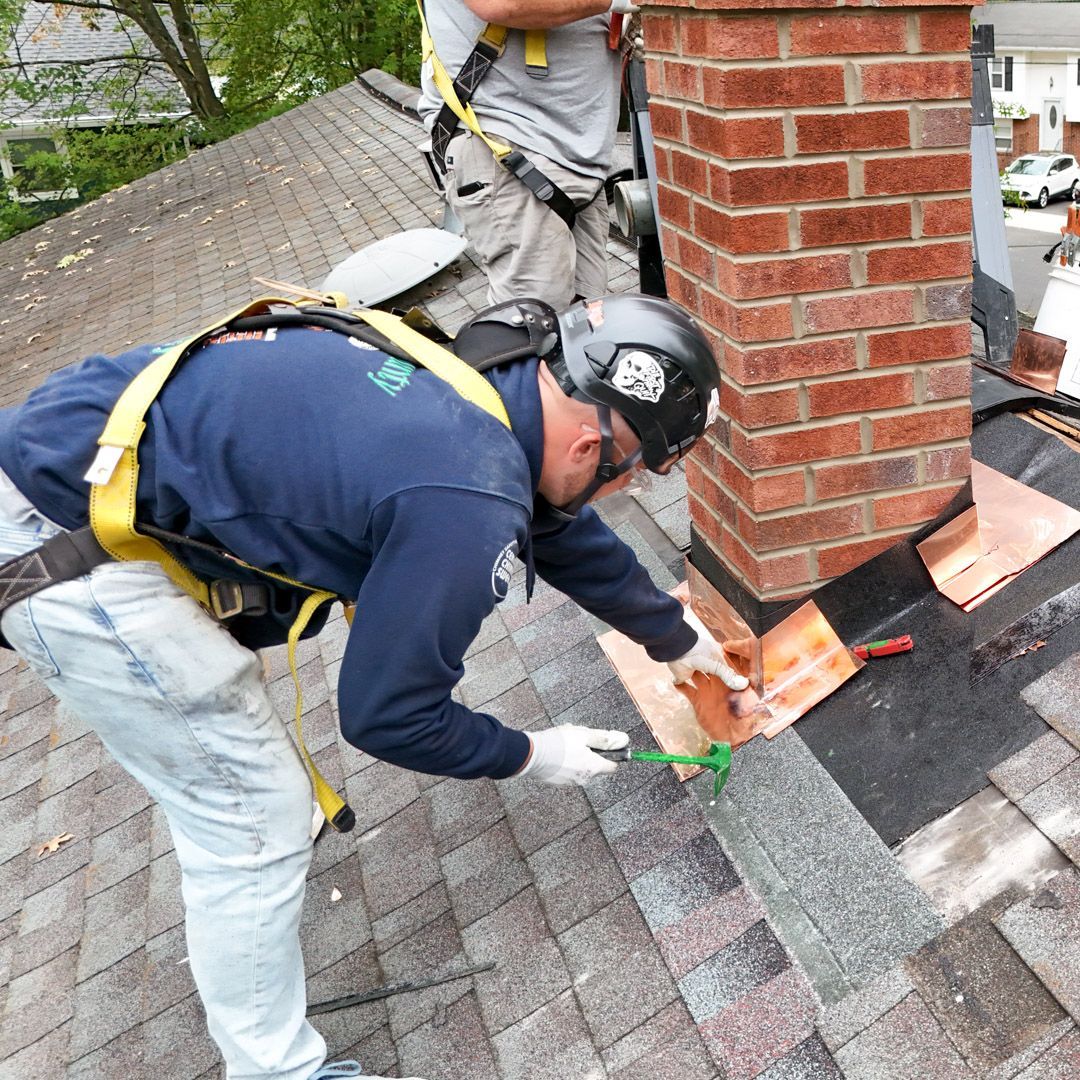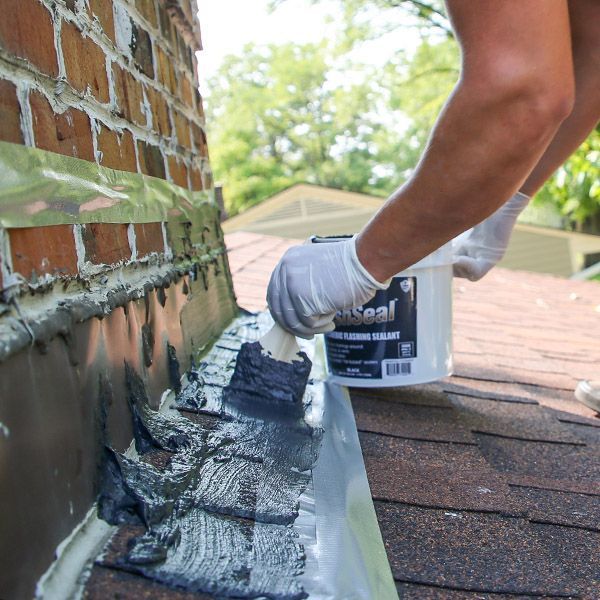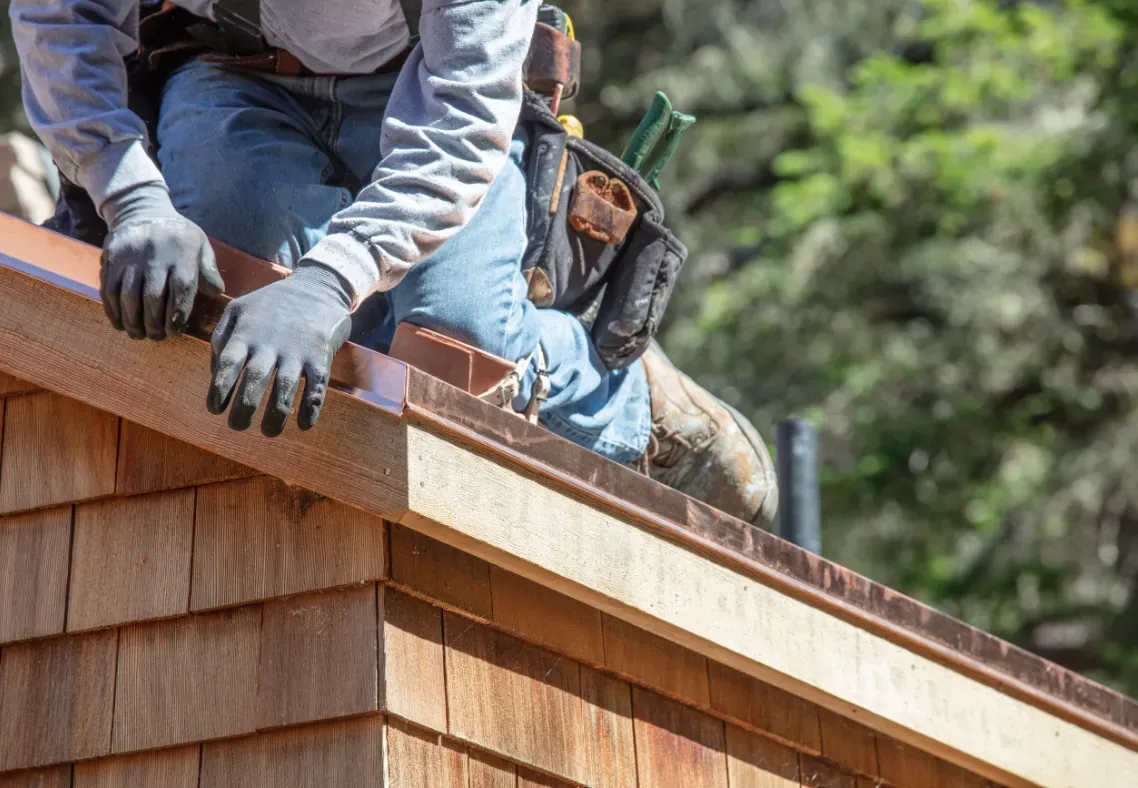Roof Flashing Installation and Repair
At Superior Roofing & Sons, we understand how important roof flashing installation and repair is to protecting your home. Roof flashing is a key element that keeps water from seeping into areas where the roof meets walls, chimneys, or vents. Without proper flashing, your roof can develop leaks that cause costly damage over time. Our roof flashing installation and repair service ensures your home stays dry and secure by sealing these vulnerable spots with durable materials that last.
We use quality metals and precise techniques to make sure the flashing fits perfectly and works as it should. Whether you need new flashing installed during a roof replacement or repairs on damaged flashing, we tailor our work to fit your roof’s specific needs. You can trust our team to inspect the flashing carefully, fix any problem signs like rust or gaps, and install new flashing that helps maintain the strength and stability of your roof system.
By choosing us for your roof flashing needs, you are getting experience and attention to detail that protects your investment. We know that proper flashing is not just a small fix but a crucial step in keeping your home’s structure sound and preventing leaks that affect your comfort and safety. We look forward to helping you maintain a healthy roof that stands up to weather and time.
Roof Flashing Repair Services
We focus on fixing worn or damaged flashing to prevent leaks and water damage. Our work includes spotting weak spots, repairing leaks, and handling urgent repairs quickly to protect your property. We use proper materials and techniques to keep your roof secure.
Common Flashing Problems We Fix
Flashing can crack, rust, or pull away from the roof over time. These issues let water seep in and damage your building. We often repair:
- Cracked or split flashing caused by weather or age
- Rusted metal flashing that weakens the seal
- Loose or missing flashing that leaves gaps
- Poorly sealed joints that let in moisture
By fixing these problems early, you avoid larger roof damage and costly repairs. We carefully inspect flashing around chimneys, vents, skylights, and roof edges to find hidden trouble spots.

Leak Detection and Repair
Leaks often start at small flashing faults that are hard to see. We use thorough visual checks and tools to find leaks in your flashing. Once we detect a problem, we remove damaged sections and replace or reseal flashing properly.
Our repairs restore the flashing to a tight, waterproof seal. This stops water from entering and causing damage inside your home or business. We make sure every repair can handle local weather conditions like rain, snow, and heat.

Emergency Roof Flashing Repairs
When flashing fails suddenly, it can cause serious leaks fast. We offer quick emergency repairs to protect your building as soon as possible. Our team responds promptly to fix holes, seal gaps, or replace flashing after storms or other damage.
We prioritize urgent flashing issues to reduce water damage risks. You can trust us to act fast and repair your roof flashing with lasting results, no matter the time of day or weather.

Signs You Need Roof Flashing Services
You should watch for clear signs that your roof flashing is damaged or not working properly. These include visible problems on the roof, water stains inside your home, and parts of flashing that are missing or loose. Catching these early helps us fix things before they cause bigger issues.
Visible Damage or Rust
If you see cracks, bends, or rust on your roof flashing, it means it’s time for service. Flashing protects your roof by sealing joints and edges. Damage allows water to get through and cause leaks.
Rust is a sign that the metal is deteriorating. Once flashing starts to rust, it won’t hold up against weather conditions. This can make the flashing brittle and easier to break.
We recommend inspecting your flashing regularly, especially after storms. If you spot any damage, call us to repair or replace it before water can get in.
Water Stains on Ceilings
Water stains on your ceilings or walls usually mean water is leaking through the roof. Poor flashing is often the cause because it fails to direct water away from vulnerable parts of the roof.
These stains often appear as brown, yellow, or discolored patches. They might start small but grow over time if the leak isn’t fixed.
If you notice stains inside your home, check your roof flashing right away. We can inspect and repair the flashing to stop leaks and prevent damage to your ceilings and walls.
Missing or Loose Flashing Pieces
Flashing that is missing or loose creates gaps where water can easily enter your home. High winds, storms, or poor installation can cause flashing to come loose or fall off.
You might notice parts of flashing missing around chimneys, vents, or roof edges. Loose flashing can sometimes flap in the wind, making it easier to spot.
We offer services to reattach, replace, or secure flashing pieces. Acting fast keeps water out and keeps your roof strong.

Roof Flashing Maintenance Tips
Keeping your roof flashing in good shape helps protect your home from leaks and water damage. We recommend checking your flashing at least twice a year, especially after bad weather. Damaged flashing can let water in, leading to bigger problems. If you spot any issues, contact us for a quick repair or replacement to keep your roof watertight.
Cleaning debris around flashing is important. Leaves and dirt can trap moisture, causing rust or rot. Use a soft brush or cloth to clear the area gently without damaging the metal.
Make sure sealants around your flashing are intact. Over time, caulk and other sealants can dry out and crack. We offer resealing services that restore tightness and prevent leaks. If you notice flashing that looks bent or out of place, it may need adjustment. Our team can realign flashing for the best fit and protection.
Our Roof Flashing Service Process
We focus on a careful inspection, clear recommendations, and honest pricing to make sure your roof flashing protects your home well. Each step is designed so you know exactly what to expect and get the best results.
This is a short title
This is the text area for this paragraph. To change it, simply click and start typing. Once you've added your content, you can customize its design.
1. Initial Roof Inspection
We start by thoroughly examining your roof to find any flashing issues. This includes checking around chimneys, vents, skylights, and edges where water might get in. We look for cracks, rust, or loose flashing, which can cause leaks. Our inspection helps us understand the exact condition of your roof flashing. We use tools to detect hidden damage that might not be visible at first glance. This careful check allows us to plan the right repair or replacement.
This is a short title
This is the text area for this paragraph. To change it, simply click and start typing. Once you've added your content, you can customize its design.
2. Customized Service Recommendations
After the inspection, we explain what needs to be done in clear terms. You’ll get specific options based on your roof type, age, and flashing condition. Whether it’s a simple repair or full replacement, we tailor our service to fit your roof’s needs. We also consider weather resistance and materials that will last longer. Our goal is to improve your roof’s protection while staying within your budget. You decide which solutions work best for you.
This is a short title
This is the text area for this paragraph. To change it, simply click and start typing. Once you've added your content, you can customize its design.
3. Transparent Pricing and Estimates
We provide detailed estimates so you know the cost before we start. Our pricing breaks down materials, labor, and any extra work needed. This way, there are no surprises when it’s time to pay.
If repairs are needed later, we will explain additional costs upfront. We keep communication open and clear, so you feel confident in choosing us for your roof flashing needs.
FAQs on Roof Flashing Installation and Repair
Roof flashing must be installed carefully to keep water out and protect your roof’s structure. You want flashing that fits tightly and directs water away from vulnerable spots. Knowing when to repair flashing and what materials to choose helps maintain your roof’s durability.
How should flashing be installed on a roof?
Flashing should be installed under the shingles or other roofing materials to create a watertight seal. We place it around chimneys, vents, and roof edges where leaks are most likely. It’s important that flashing overlaps properly and is sealed at joints to prevent water from seeping in.
What are the common signs that roof flashing needs repair?
Look for rust, cracks, or bending in the metal flashing. Water stains inside your home or on the ceiling can signal leaks. If you see shingles lifting near flashing or feel moisture in your attic, these are signs flashing may need attention.
What is the expected lifespan of roof flashing?
Most metal flashing lasts 15 to 30 years, depending on the material and weather conditions. Proper installation and maintenance can extend its life. We inspect flashing during roof checks to catch issues before they cause damage.
How does Superior Roofing ensure quality in flashing installation?
We use precise measurements and high-grade materials to fit flashing exactly where it’s needed. Our team follows strict procedures to seal joints and overlaps. We also inspect every installation carefully for tightness and durability before finishing the job.
Can Superior Roofing handle complex flashing repairs for historical buildings?
Yes, we have experience working on historic homes where flashing must match old styles and materials. We adapt modern techniques to preserve your building’s look while ensuring protection. Our team respects the structure’s original design while improving its weather resistance.
What types of flashing materials does Superior Roofing recommend?
We commonly use aluminum, galvanized steel, and copper for durability and ability to resist rust. Copper is ideal for long-lasting and visually appealing installations. We choose the best material based on your roof type and local climate to give you the strongest protection.
